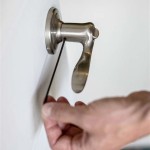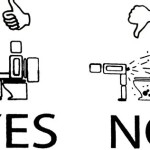How Do You Hide Exposed Bathroom Pipes in Japanese Homes?
In many Japanese homes, exposed bathroom pipes are a common sight. While this design choice may be practical, it can detract from the aesthetic appeal of the bathroom. Thankfully, there are several effective ways to conceal these pipes and create a more visually pleasing space. This article explores various approaches to hiding exposed bathroom pipes in Japanese homes, focusing on practical and aesthetically pleasing solutions.
1. Encasement and Covering
One of the most straightforward methods involves encasing the pipes within decorative elements. This approach not only conceals the pipes but also integrates them seamlessly into the bathroom design. Here are some popular encasement techniques:
- Wooden Panels: Lightweight and versatile, wooden panels can be painted, stained, or left natural, blending with various bathroom styles. They can be attached to the wall using brackets or directly onto the existing pipes.
- Drywall: A common solution for concealing pipes, drywall offers a smooth, clean finish. To achieve this, create a frame around the exposed pipes and secure drywall panels to it. The finished surface can be painted or tiled to match the rest of the bathroom.
- PVC Panels: Moisture-resistant and easy to clean, PVC panels provide a practical and affordable option. They come in a variety of colors and textures, allowing you to choose the best match for your bathroom.
In addition to encasement, you can cover visible pipes with:
- Fabric: Lightweight fabrics like cotton or linen can be draped over the pipes, adding a touch of softness and texture to the bathroom.
- Bamboo Mats: These natural materials offer a unique and rustic look, concealing pipes while adding a touch of Japanese aesthetics.
- Wallpapers: Decorative wallpapers can be applied to the wall around exposed pipes, effectively masking them while adding visual interest to the space.
2. Utilizing Decorative Elements
Integrating exposed pipes into the bathroom design can transform them from an eyesore into a distinctive feature. This approach requires creativity and a keen eye for aesthetics. Consider incorporating these ideas:
- Shelving: Install shelves around the pipes, creating a functional storage solution while cleverly masking the pipes.
- Mirrors: Positioning a mirror near the pipes can create the illusion of depth and draw attention away from the pipes.
- Plants: Hanging plants or placing potted plants around the pipes can add a touch of life and visually soften the presence of the pipes.
- Artworks: Install artwork or decorative objects near the pipes, diverting focus from the pipes and creating a focal point in the bathroom.
3. Relocating Pipes
In some cases, relocating pipes might offer the cleanest and most aesthetically pleasing solution. This approach is best considered during renovations or new construction, as it requires significant structural changes. Engaging a licensed plumber is crucial to ensure safe and efficient pipe relocation.
When relocating pipes, prioritize these factors:
- Accessibility: Ensure easy access for maintenance and repairs.
- Functionality: The new pipe location should not interfere with bathroom fixtures or obstruct flow.
- Aesthetics: Choose a location that blends seamlessly with the bathroom design.
By carefully planning and implementing these strategies, you can effectively conceal exposed bathroom pipes in a Japanese home, creating a more visually appealing and harmonious bathroom space.

Pin On Decor

How To Hide Pipes Behind A Toilet Checkatrade
9 Hdb Bathroom Makeovers For Every Budget

Hdb Bathroom Design Ideas 20 Toilet Renovation Guidelines
9 Hdb Bathroom Makeovers For Every Budget

Japanese Bathroom 101 A Guide For First Time Visitors Japanbased

Hdb Bathroom Design Ideas 20 Toilet Renovation Guidelines

How To Hide Pipes Behind A Toilet Checkatrade

Hdb Bathroom Design Ideas 20 Toilet Renovation Guidelines

How To Hide Pipes Behind A Toilet Checkatrade
Related Posts






